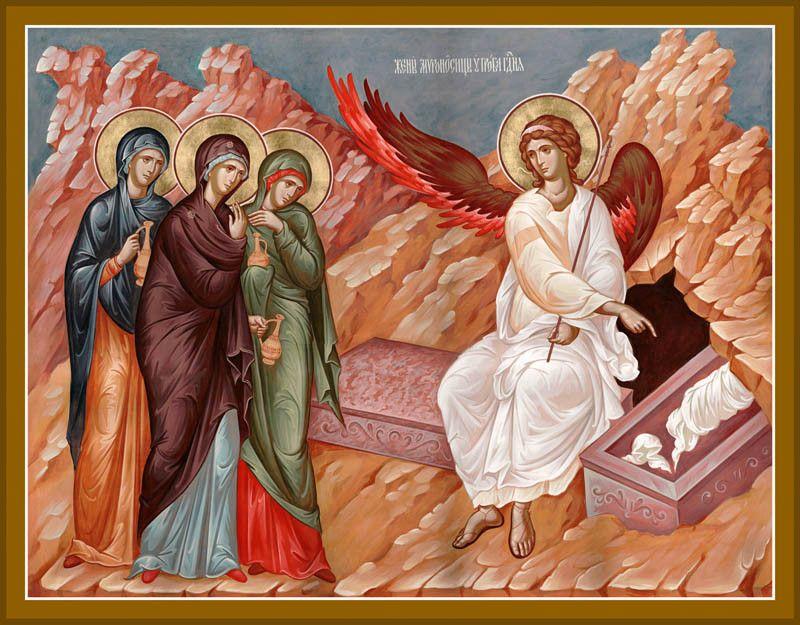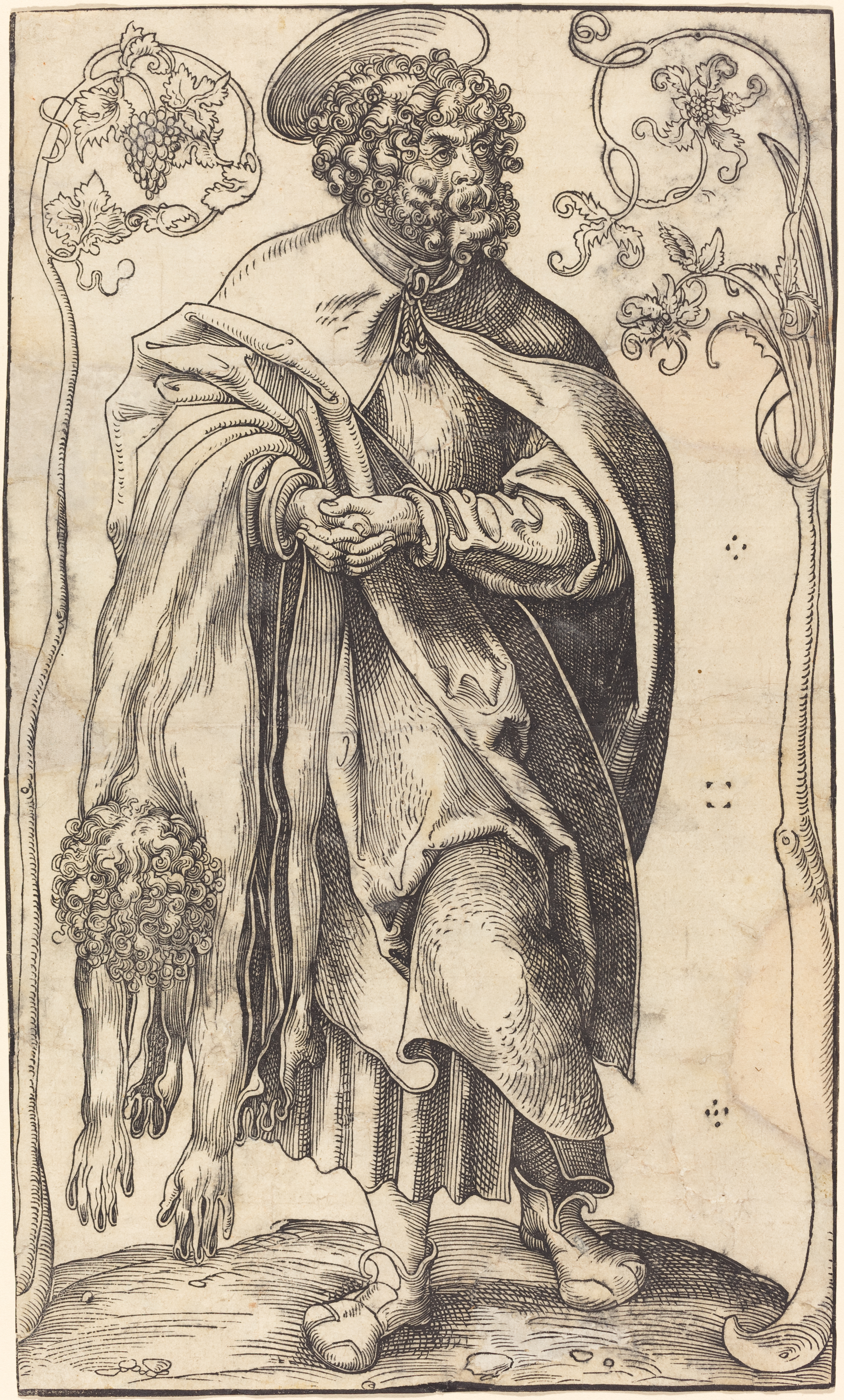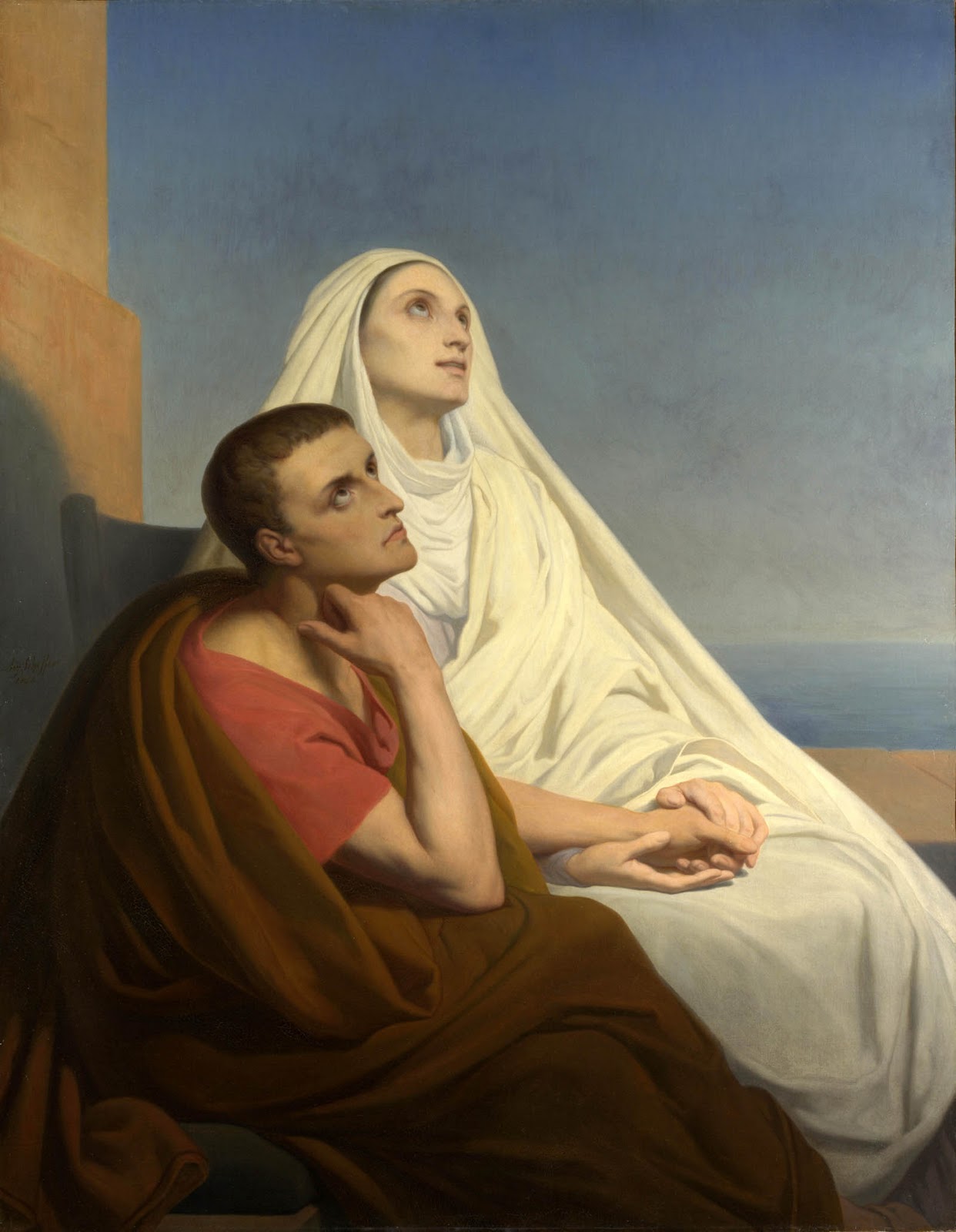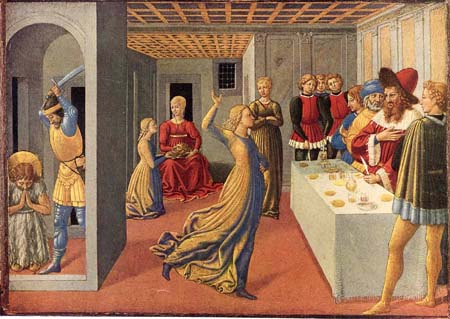Powered by RedCircle
Fifteenth Sunday after Pentecost – Sermon
Powered by RedCircle
August Thoughts… The Poor, the Lowly, and the Despised
Throughout August, the Church remembers a great variety of people and helps us to see the great variety of those who have faith in Christ Jesus our Lord. As we look at these, our brothers and sisters who have gone on before us, we see how the Lord Himself does not show partiality (Acts 10:34-35) but raises up the poor, and the lowly, and the despised who trust in Him.
As always, these saints and days can be found in Lutheran Service Book on pages xi-xiii. Those that are italicized are not found in LSB, but are in Liturgies et Cantiques Luthériens, the French language hymnal prepared by LCC and used by our French-speaking sister congregations as well as French Lutherans around the world. These can also be found on pages xi-xiii of the LCL.
All Scripture quotations are from the Evangelical Heritage Version.
August 3: Joanna, Mary, and Salome, Myrrhbearers

Joanna, Mary, and Salome (1st century AD) were three of the myrrhbearing women who came to care for the body of our Lord after His death and were some of the first witnesses of His resurrection. Joanna was the wife of Chuza, Herod’s steward. She is first mentioned in Luke 7 where she listed among the women who financially supported Jesus and His disciples. Mary was the mother of James the Younger and Joseph (also called Joses). Finally, there is Salome, who also was one who ministered to the needs of Jesus and the disciples and was present at the crucifixion of our Lord. There three women, along with Mary Magdalene, came to the tomb early on the day after the Sabbath out of love for their Lord to properly anoint Him for burial. Their love proved greater than the disciples for they were afraid and locked themselves away, but these women did not care if others identified them as followers of Jesus. Thus, through their loving actions their faith was shown. Rather than finding the Lord they instead found an open tomb and angels, proclaiming the glorious resurrection of their Saviour and commissioned them to spread this news to the fearful eleven. For such great love and faith we give thanks to God and we pray that He would grant us the same to bravely and confidently be identified as Christians, even when others fear.
[The angel] said to them, “Do not be alarmed. You are looking for Jesus the Nazarene, who was crucified. He has risen! He is not here. See the place where they laid him. But go, tell his disciples and Peter, ‘He is going ahead of you into Galilee. There you will see him, just as he told you.’”
Mark 16:6-7
August 8: Jean Vallière, Martyr
Jean Vallière (c. 1483 – August 8, 1523) was an Agustinian monk and French martyr during the Reformation. Vallière was a hermit who lived near Livry outside of Paris. He met the humanist Jacques Lefèvre d’Étaples at Meaux and it was there that he learned of the budding Reformation in Germany and was convinced of the saving Gospel. After teaching and preaching this in the surrounding villages he was arrested for spreading the “heresy of Luther.” In order to help discourage the populace from following this teaching he was falsely accused of various other blasphemies (this same tactic was employed at the Diets of both Worms and Augsburg). He was burnt alive in the centre of Paris wearing his hermit’s garb confessing that his only hope was in his Lord Jesus Christ and the grace of God. This martyrdom was one of the many early on during the Reformation and was little over a month after the first martyrs of the Reformation Hendrick Voes and Jan van Essen (also Augustinian monks) were put to death in Brussels. We give thanks to God for this martyr and his steadfast faith, and pray that He would likewise preserve us under trial.
[Jesus said,] “I have told you these things so that you will not fall away. They will put you out of the synagogues. In fact, a time is coming when anyone who murders you will think he is offering a service to God.”
John 16:1-2
August 10: Lawrence, Deacon and Martyr
Lawrence (December 31, 225 – August 10, 258) was a deacon in Rome and a martyr in the persecution of Emperor Valerian. As a deacon, Lawrence was one of those responsible for the care for the poor and other mercy work (such as ransoming prisoners of war, paying for the debt of those about to enter slavery, etc). Because many of these acts required the use of money there were rumours among the pagans that the Church was in possession of great wealth and treasures. Lawrence, one whom they knew was responsible for such work, was brought before the authorities and commanded to hand over the treasures of the Church or to be put to death. Lawrence agreed and went throughout the city gathering the poor, the lowly, and the despised and any whom the Church would care for. When questioned about the meaning of what he had done Lawrence replied that these people were the treasures of the Church. As a result, he was ordered to be put to death by being burned alive on a grill. Like many of the ancient martyrs, Lawrence went to his death with joy because he knew that His Saviour who purchased him with the precious treasure of His blood would receive him. At one point he is said to have told his executioners, “Turn me over, this side is finished!” In Lawrence we have an example to follow in his steadfast faith in the face of death and of love towards our neighbours, especially the poor, lowly, and despised.
For example, consider your call, brothers. Not many of you were wise from a human point of view, not many were powerful, and not many were born with high status. But God chose the foolish things of the world to put to shame those who are wise. God chose the weak things of the world to put to shame the things that are strong.
1 Corinthians 1:26-27
August 15: St. Mary, Mother of our Lord

The Blessed Virgin Mary (1st century AD) was the one whom our Lord and God favoured and chose to be the mother of the only-begotten Son in the flesh. By her own words in the Magnificat (her inspired song which we still sing at Vespers) she was from a poor and insignificant family, despite being a descendant of David. While still a virgin, the angel Gabriel appeared to her and told her of the miracle of the incarnation and virgin birth of the Saviour. In response, she gives the Amen of faith. She appears in a number of events in the life of her Son, our Saviour including at His circumcision, His presentation in the Temple, His questioning of the teachers at the Temple while a child, and at His first miracle at the wedding in Canna. She was also present at the crucifixion, where in tender love towards her, our Saviour gave her into the care of His beloved disciple John with whom she lived until she died. She is said to have died in Ephesus, where John was eventually bishop. It was here where the ecumenical council was held which answered the question of whether she should be called θεοτόκος (theotokos, God-bearer). The answer was yes, for her Son was both man and God, thus the one she bore is not a mere man, but God in the flesh. As such it is appropriate to call her the Mother of God. For this we give thanks, and call her blessed, for by God’s grace she holds a special position which none other can claim, bearing the Saviour of the world even though she did not deserve it. For this she is the most blessed of all women, and in her we see an example of pure faith in Jesus and God’s desire to save all by His grace even though they do not deserve such a gift.
The angel went to her and said, “Greetings, you who are highly favored! The Lord is with you. Blessed are you among women!”
Luke 1:28
August 16: Isaac, Patriarch
Isaac (c. 2066 – 1886 BC) the son of Abraham, was one of the three major patriarchs leading up to the children of Israel. Isaac himself was the child of the promise which the Lord God made to Abraham and Sarah that even though in their old age they would have a child through whom all the nations of the world would be blessed. This ultimately finds its fulfillment in Jesus Christ, for through His death as a sacrifice for sin all nations are blessed and may be saved. There is far less in the Scriptures regarding Isaac compared to his father Abraham and his youngest son Jacob. However, there are a number of parallels and types of Christ in his life. In addition to being the child of promise, he was also a type of our Lord’s death and resurrection. In testing Abraham, God asked Abraham to offer to him his son, his beloved son, to Him. Isaac, like Christ, bears the wood of his sacrifice up the mountain to the altar. However, rather than dying, he is spared when the Lord provides a ram to sacrifice instead. This points us forward to God who gave His Son, His beloved Son, as a sacrifice for sin so that He might die in the place of sinners. As an ancestor of Christ, we give thanks to God for him, as well as for the ways in which he points forward to his holy Descendant who fulfills what he enacted by type and shadow.
Then Abraham fell on his face and laughed and said in his heart, “Will a child be born to someone who is one hundred years old? Will Sarah, who is ninety years old, give birth?” And Abraham said to God, “Oh, let Ishmael live in your presence!” But God said, “No, Sarah, your wife, will bear a son for you. You shall name him Isaac. I will establish my covenant with him as an everlasting covenant for his descendants after him.
Genesis 17:17-19
August 17: Johann Gerhard, Theologian

Johann Gerhard (October 17, 1582 – August 17, 1637) was a Lutheran theologian and pastor in the 17th century and played a large role in reacting to challenges from both Calvinist and Roman Catholic apologists. Today Gerhard is known for both his devotional and dogmatic writings. His devotional works are rich in imagery and display some of the finest examples of Lutheran piety which is saturated with Scripture and application to daily life while focusing on the work of our Saviour. His first great work, Sacred Meditations, was completed when he was only 22 years old. His dogmatic works include an in-depth systematic theology which builds on those of Martin Chemnitz and Philip Melanchthon and remains to this day one of the greatest works of Lutheran theology. Other works of his focus on the catholic character of the Evangelical Church by demonstrating that it is in harmony with the ancient and medieval Church, it is merely purified of innovations. Through all of these works his love for his Saviour and great faith is evident and he demonstrates for us how piety and orthodoxy should go hand in hand.
[Jesus] said to them, “Therefore every expert in the law who has been trained as a disciple in the kingdom of heaven is like the owner of a house who brings out of his treasure both new things and old things.”
Matthew 13:52
August 19: Bernard of Clairvaux, Hymnwriter and Theologian
Bernard of Clairvaux (1090 – August 19, 1153) was a prominent abbot, theologian, and hymnwriter in the 12th century. As a young man, Bernard joined a reformed Benedictine monastery at Citeaux (the first Cistercian monastery) that sought to follow the Rule of St. Benedict more strictly. Early on he was chosen to head a new monastery for the order. Bernard’s theology was often very devotional and many of his works were influential in shaping Lutheran devotional writers. Bernard also saw the importance of music and its role in theology and teaching. His hymns have been used continuously in the Church since his time and have been translated and used as the basis of new hymns as well, including some in our hymnal. Bernard was held up by the Reformers as an example of one of those in the past who sought out monasticism for the right reasons: in order to study the Scriptures and be devoted to teaching and contemplation while still trusting solely in Christ for his salvation.
Therefore I will praise you among the nations, Lord. To your name I will make music.
Psalm 18:49
August 20: Samuel, Prophet
Samuel (c. 1080 – c. 1010 BC) was a prophet and judge in pre-kingdom Israel. Samuel’s birth was the result of God’s special intervention and so his mother Hannah gave him to the tabernacle to serve the Lord. At this time, Hannah prayed the Exultavit Cor Meum, a song with themes very similar to St. Mary’s Magnificat. The Lord first called Samuel when he was young and gave him the difficult task of prophesying to Eli the priest the fall of his house. As judge, Samuel guided the people of Israel for many years before they demanded a king. The Lord used him to anoint His chosen king, Saul, and later when Saul lost the favour of God by his rebellion, Samuel was sent to anoint David. Samuel acts for us as an example of faithfulness to God amidst an unfaithful world. Samuel felt rejected when the people asked for a king, but the Lord comforted him telling him that the people were not rejecting him, but God Himself (1 Sam 8:7). Samuel had to live with the fact that not only his people, but even his own sons, rejected the way of God (1 Sam 8:1-3). In him we see God’s care for His faithful people, even when their children reject Him, and so may be strengthened if we face similar situations.
My heart rejoices in the Lord! In the Lord, my horn is raised high. My mouth is opened wide against my enemies, because I find joy in your salvation.
1 Samuel 2:1
August 24: St. Bartholomew, Apostle

St. Bartholomew (1st century AD), also called Nathanael in the Gospel of St. John, was an Apostle of our Lord and Saviour Jesus Christ. Bartholomew was called by St. Philip (John 1:43-51) and was originally sceptical of the Lord as the Messiah until hearing His words. Aside from his call, there is little mentioned of him in the New Testament besides the lists of the Disciples. According to tradition Bartholomew and St. Jude Thaddaeus brought the Gospel to the people of Armenia. He is remembered to have been martyred for the Lord by being flayed alive and then beheaded. As such, he is often depicted holding a knife in art. Bartholomew is an example for us of humble faith because he served the Lord not for notoriety or to gain anything, but because of his love for Him and out of thanks for the forgiveness of sins. His conversion is also an example of the Lord’s mercy and love for even those who doubt and of His powerful word to give us confidence in Him.
Jesus replied, “You believe because I told you that I saw you under the fig tree. You will see greater things than that!” Then he added, “Amen, Amen, I tell you: You will see heaven opened and the angels of God ascending and descending on the Son of Man.”
John 1:50-51
August 26: Caesarius of Arles, Theologian
Caesarius of Arles (c. 468 – August 27, 582) was bishop of Arles in modern France. As bishop, Caesarius was responsible for overseeing the clergy under him. While some at this time were already treating this office as a political appointment, Caesarius stressed the need for the bishop to teach and care for the laity and clergy in their care. Because of this, Caesarius became known for his sermons, over 250 of which survive to this day. He also stressed the importance of the Word in the life of the Christian, both in the Divine Service and in the home. He desired that the people study and read or hear the Scriptures at home and to treasure the Scriptures just as much as they treasured the Sacraments. Caesarius oversaw the Synod of Orange in 529 which upheld the truth of the Gospel against semi-Pelagianism. This synod was used as an example by the Reformers of God preserving the pure Gospel within the Church at all times and as proof that the doctrine which they taught was not new but had always been believed and accepted. Caesarius serves as an example for pastors and all can be encouraged by his teaching and reminding us of the importance of the Word in our lives.
Your words are a lamp for my feet and a light for my path.
Psalm 119:105
August 27: Monica, Mother of Augustine

Monica (c. 332 – 387) was the mother of Augustine and an example of patience and love for unbelieving children. Monica was from Thagaste in North Africa (modern Algeria) and married a pagan named Patricius, a city official. Patricius did not allow Monica to bring any of her children to be baptized and so they were raised in the usual way of Roman pagans. At one time in Augustine’s childhood while very ill, Monica convinced Patricius to allow Augustine to be baptized, but he reneged when he recovered. And so, through much of her life, Monica watched as her husband and children continued in unbelief while she alone held to saving faith. She remained in constant prayer for her family even when it seemed that they continued to go in the wrong direction. Eventually she saw her prayers answered when her son converted to Christianity while in Italy. On their way back to Africa after his baptism in Milan Monica was called to glory and died in peace in Ostia. For centuries, she has been an example to follow for those parents of unbelieving children and children who have left the faith. She is an example of continuing in prayer for them, keeping relationships with them, and entrusting them into the care of God alone who can convert their hearts.
Rejoice always. Pray without ceasing. In everything give thanks. For this is God’s will for you in Christ Jesus.
1 Thessalonians 5:16-18
August 28: Augustine, Pastor and Theologian
Augustine of Hippo (November 13, 354 – August 28, 430) was an influential North African pastor and theologian. Augustine grew up in a pagan manner after his father, despite the protests of his mother Monica. While going to school in Carthage he became a Manichaean and took to living with a woman outside of marriage and fathered a child. Augustine moved to Milan in order to take a position as a teacher of rhetoric. In Milan, influenced by his studies in various philosophies, his reading of the New Testament at the advice of his mother, and the preaching and conversations with Ambrose of Milan he was convinced of the truth of the Christian faith. After returning to Africa he was ordained at Hippo in 391. Four years later he was elected Bishop of Hippo. As the bishop Augustine gave himself to preaching and the study of the Scriptures. Augustine was one of the key figures who opposed Pelagius’ heresy, and many of his writings and commentaries became extremely influential in the Western Church. He is an example of a faithful pastor, of God’s mercy by way of his conversion later in life, and of a faithful theologian.
The goal of this command is love that comes from a pure heart, from a good conscience, and from a sincere faith.
1 Timothy 1:5
August 29: Martyrdom of St. John the Baptist

According to Christian tradition, it was on this day in AD 28 when Herod Antipas put St. John the Baptist to death by having him beheaded while in prison (Mark 6:27). Through his life, St. John was the forerunner of Christ, “going before the Lord to prepare His way” (Luke 1:76). This happened in his birth, his preaching, his baptising of the Lord, and even in his innocent death. For John was not put to death for any crime but due to a grudge that Herodias, the illegitimate wife of Herod, had concerning his preaching of repentance from the Word of God. As the last prophet before the Messiah and last prophet of the Old Covenant, John points forward to the Messiah that he proclaimed even in his death. Even his burial is similar to that of his Lord’s, for John’s disciples came and took the body away to bury it after his death (Mark 6:29). And while during the Reformation the abuse of relics was connected to this festival (there are four places which claim to have the head of John the Baptist, including a mosque), this festival helps us to remember the example of John the Baptist and encourages us in the bearing of our crosses and out witness to our faith and the hope of everlasting life we have within us.
A white robe was given to each one of [the souls of the martyrs under the altar]. And they were told to rest a little longer until their number would be complete, when their fellow servants and their brothers would be put to death as they were.
Revelation 6:11
Festival of the Martyrdom of St. John the Baptist – Sermon
Powered by RedCircle
Thirteenth Sunday after Pentecost – Sermon
Powered by RedCircle